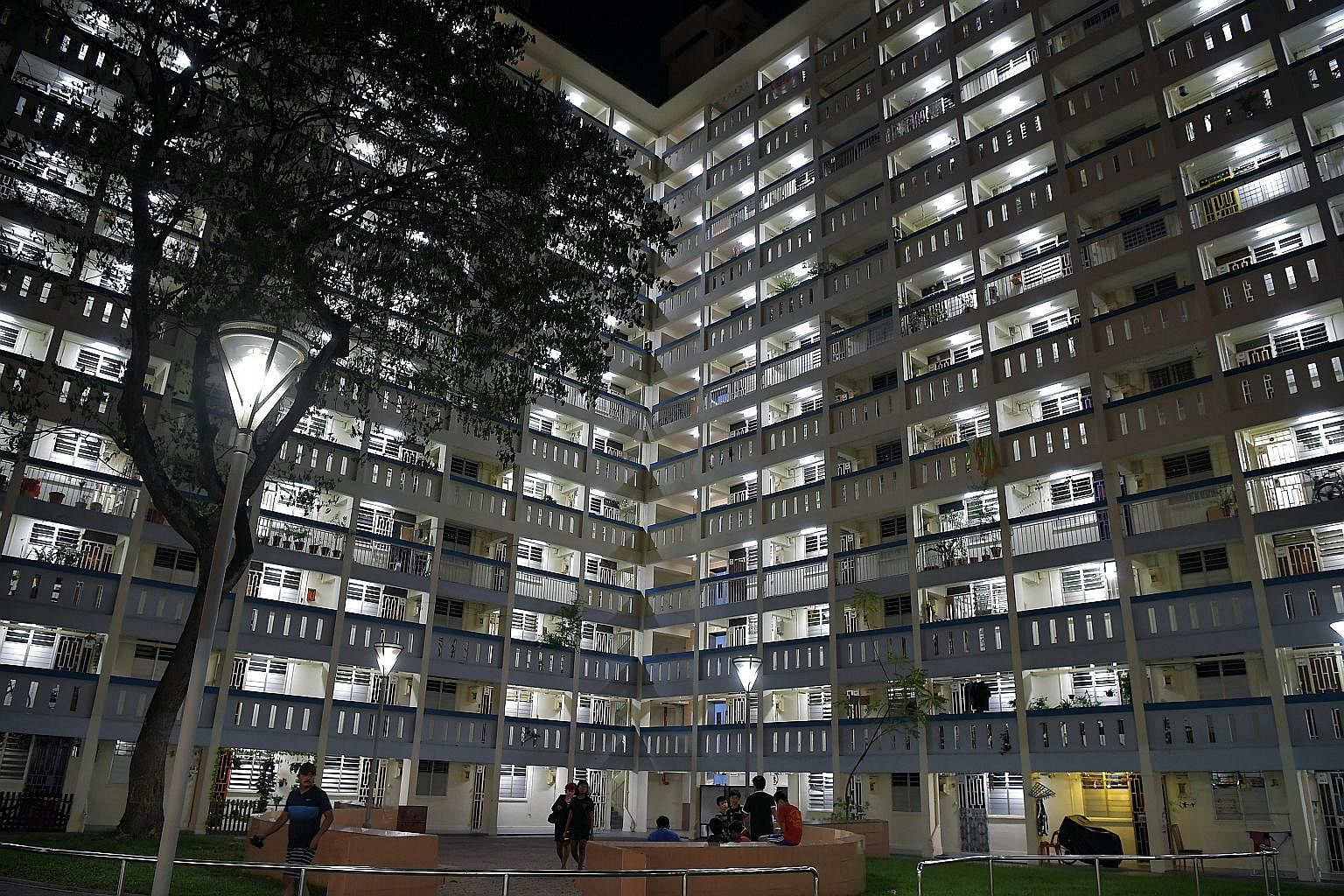The Housing Board (HDB) recently announced new occupancy caps for flats rented out on the open market (HDB lowers cap on number of tenants allowed in flats; Feb 2).
The new rules bring down the maximum number of persons who may live in four-room and larger flats from nine to six, in line with the limit for three-room flats. The cap for one-and two-room flats remains at four persons.
These changes may come as a relief to those who are concerned about noise and the sharing of public spaces when their neighbours' properties are overcrowded.
Like a similar reform to private housing last year, the changes may also benefit the rental property market. HDB rentals have been falling across all flat types since 2013. Lower occupancy caps tighten supply and boost rents.
However, the well-being of tenants has been missing from this conversation.
Occupancy guidelines can protect tenants from overcrowded housing conditions and should be applied consistently across all housing types, including public rental housing let by the HDB to low-income households.
The United Nations considers adequate housing fundamental to security, peace and dignity. It is a precondition to other things that are important in life, such as health, work, education and social participation.
The right to adequate housing entails inclusive access, secure tenure, affordability and availability of services. It also includes habitability, defined as physical safety and adequate space.
Occupancy limits should be part of a more comprehensive set of space guidelines and housing standards that respect tenants' basic need for adequate housing. This need applies to everyone. Housing standards must also be extended to public rental flats and serve as a basis for reviewing the adequacy of the rental housing stock.
There are about 58,000 flats in Singapore which are rented out by the HDB to low-income households at subsidised rates.
These are almost exclusively one-and two-room flats measuring 30 or 40 sq m each. Only households with income and more than two members are eligible for two-room flats.
Those with no income are eligible for only one-room flats regardless of household size. This puts financial means ahead of needs for adequate space among the most vulnerable families.
Last year, when we conducted a survey with 1,000 public rental households, we found that 15 per cent of them had more than four household members.
According to the occupancy cap of four persons for one-and two-room flats in the open market, this means that one in seven public rental households is living in overcrowded conditions. Clearly, the public rental system needs larger flats to meet the needs of bigger families.
Adequate living space goes beyond having shelter at night or a place to keep things. Studies have shown consistently that overcrowding has detrimental social effects, especially on children's well-being, family relationships and health.
In our research, we have also interviewed more than 50 households with young children in public rental housing.

In many of the one-room flats we visited, there were no separate areas where children could study uninterrupted since all the activities of the family, including watching television and sleeping, were conducted within the confines of a single space.
A teenage girl we interviewed talked about feeling embarrassed because she had little personal space when her parents and brothers were at home.
Crowded living conditions can be stressful and even unhygienic because cleanliness is difficult to maintain in overcrowded flats. Some families in our interviews had problems with infestations of bed bugs and cockroaches.
Living in a small space means that contagious diseases spread more easily among family members. Poor health leads to absenteeism from school and work, which is particularly costly as low-paying jobs are often already insecure.
An overcrowded home also affects social participation as it means that families are unable to have many visitors.
In This Is What Inequality Looks Like, a recent book by sociologist Teo You Yenn, she points out that older children prefer to stay out with their friends or hang out at public places when the home environment is poor.
This is one of the reasons why parents in low-income families find it difficult to assert authority and influence in their children's lives.
Clear housing standards can provide a rational basis for making better housing policy. We can learn from others.
There are comprehensive housing standards in Canada, the United States and the United Kingdom regarding minimum floor areas in bedrooms, bedspaces, headroom and the ages of occupants.
The Canadian National Occupancy Standard specifies that no more than two persons should share a bedroom, only children of the same sex may share a bedroom from the age of five and persons aged 18 onwards should have separate bedrooms.
We are not saying that these should be Singapore's standards, we should develop our own. A good place to start is with HDB's own rental occupancy standards for its lessees (of sold flats).
These same standards can be extended to cover its tenants (of public rental flats).
While managing neighbourly ties and rental market conditions is important, housing policy should also meet the right to adequate housing.
By upholding transparent and consistent standards regardless of the type of tenure, housing policy can signal respect for diversity as well as promote social cohesion that cuts across social class.
• Ng Kok Hoe is assistant professor at the Lee Kuan Yew School of Public Policy, and Neo Yu Wei is research fellow at the Social Service Research Centre, both at the National University of Singapore.
